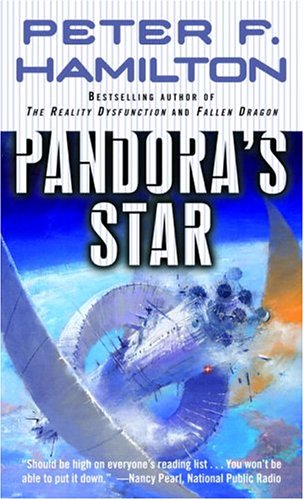The Stone Sky is the third and final book in N.K. Jemisin's award-winning Broken Earth trilogy. The first two entries, The Fifth Season (see my review) and The Obelisk Gate (see my review), each won the Hugo award for Best Novel the last two years, against very stiff competition, it must be noted. Can the third one also do it, giving Jemisin an unprecedented trifecta of Hugo wins? It's very possible, because the third book is at least as good as the first two. I would say that the first one would be my personal favorite of the three, primarily due to the novelty of the world Jemisin creates and the interesting literary device that she uses to entice the reader which pays off extremely well around three-fourths of the way.
The first book revolves around the central character, Essun, trying to find her daughter, Nassun, who has been taken away by her husband Jija after he killed their youngest child because he discovered that his wife (and thus his children) are orogenes, people who have the power to affect their surroundings by manipulating energy (in basically all its forms) with their minds and bodies. Unfortunately, this ability is often only partially under conscious control and very often orogenes will unintentionally slaughter the people around them, either through boiling or freezing them to death (by suddenly changing the amount of heat in a proximal volume of space), or causing catastrophic earthquakes. The social stigma against orogenes is so intense that Jija kills his own son and kidnaps his daughter after he discovers his wife is an orogene when she uses her powers to save the village the family had lived in as a cataclysmic event occurs which will (again) throw their entire society into turmoil. Cataclysmic events are somewhat expected in this version of Earth. So much so that these events are known as "seasons," and most people live in a state of readiness that a life-shattering event could happen at any time.
The second book follows the story of Essun as she tries to survive the aftermath of the events of the first book, while simultaneously trying to locate the surviving members of her family, Nassun and Jija. Survival takes priority, as the effects of the Season become more serious (the sun is blotted by the ash in the sky and earthquakes and tidal waves destroying coastal cities become commonplace). Essun finds a community (located underground in a geological oddity called a geode) where orogenes are not as stigmatized (in fact they are valued) and settles in with them.
In the third book, the story primarily focusses on Nassun and Essun. Nassun was taken by her father to a community run by guardians (creatures that have the power to train, control and punish orogenes) where they try to cure orogene children like her. Essun has been able to use the Obelisk Gate to locate Nassun, so she knows her daughter is alive, but the consequences of her actions (which she took to try and save the society she had joined from attack by others) are physically damaging and potentially life-threatening. Interestingly, we not only follow Nassun and Essun's story in The Stone Sky, we also get the back story of one of the mysterious (and initially terrifying) creatures called the stone eaters.
With The Stone Sky (and really with the entire series) Jemisin is deconstructing and inverting, while simultaneously deploying, many of the classic tropes of epic fantasy. There is a main character (who in this case happens to be female and dark skinned, with dread locks) who goes on a quest (to find her daughter) and finds out that she has more power than she ever believed she had. This is a familiar plot summary that we have seen many times before. But unlike most epic trilogies, things don't end up "happy ever after" for our hero in the Broken Earth trilogy. She doesn't get to sail off to the Undying Lands like Frodo in The Lord of the Rings. Happily, Essun's (and Nassun's) story is resolved without ambiguity (something that I wish Richard K. Morgan's otherwise excellent epic fantasy trilogy featuring an openly gay protagonist, A Land Fit For Heroes had done).
Overall, I would say that the Broken Earth trilogy is simultaneously similar to many other fantasy trilogies while distinguishing itself in ways that make it something that is ultimately memorable and also unlike any other fantasy trilogy that you have ever read before, while wishing you could read many more like it.
Title: The Stone Sky.
Author: N.K. Jemisin.
Paperback: 413 pages.
Publisher: Orbit.
Date Published: August 15, 2017.
Date Read: September 5, 2017.
GOODREADS RATING: ★★★★ (4.0/5.0).
OVERALL GRADE: A/A- (3.83/4.0).
PLOT: A.
IMAGERY: A-.
IMPACT: A-.
WRITING: A.





































































































